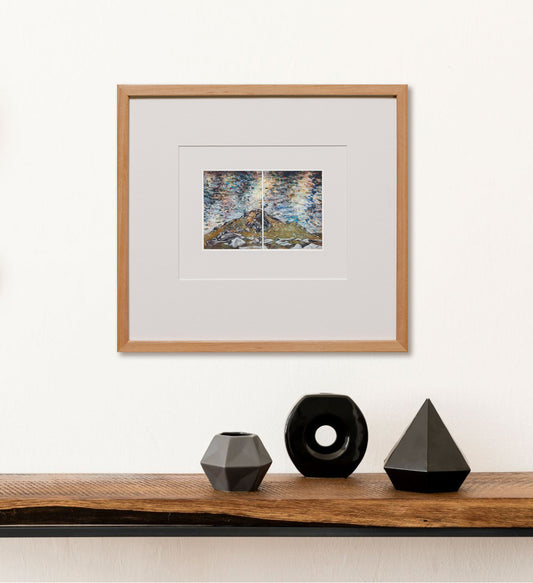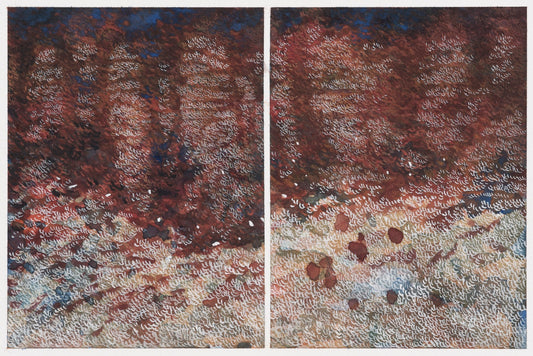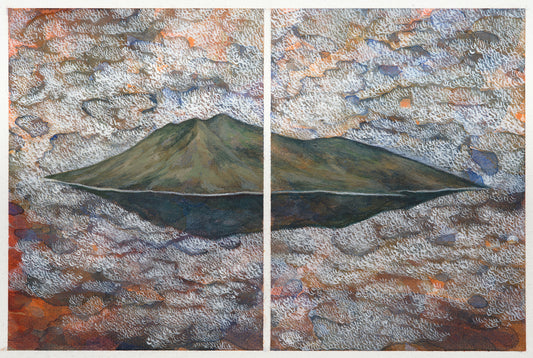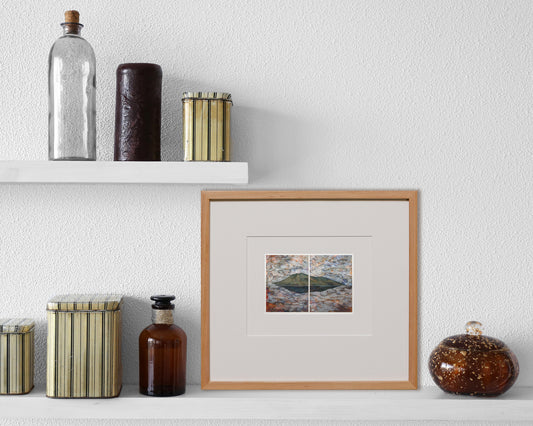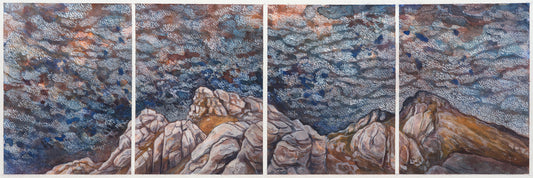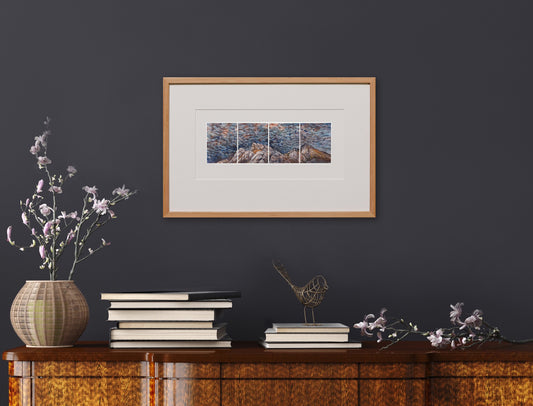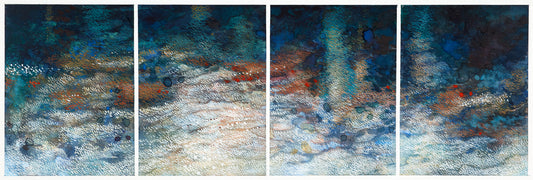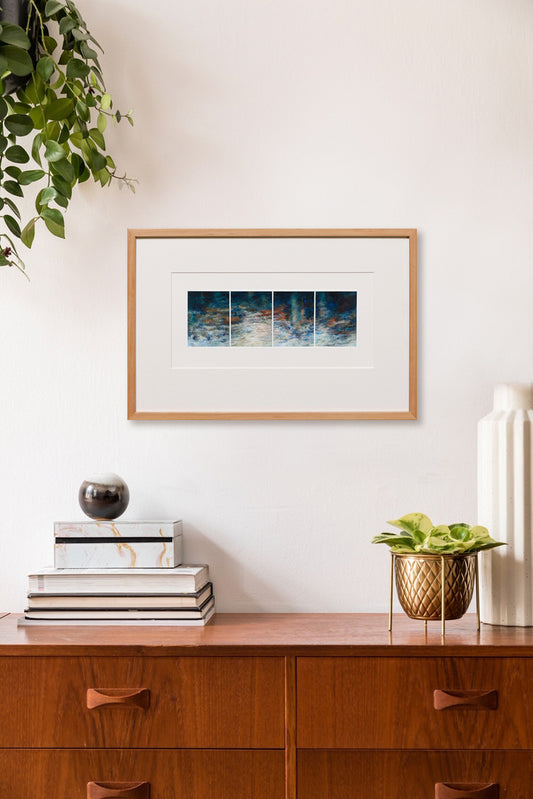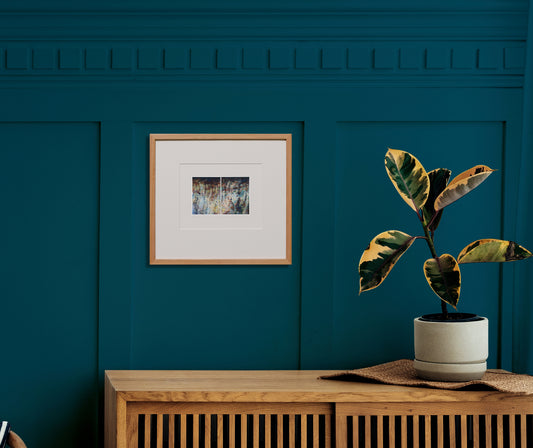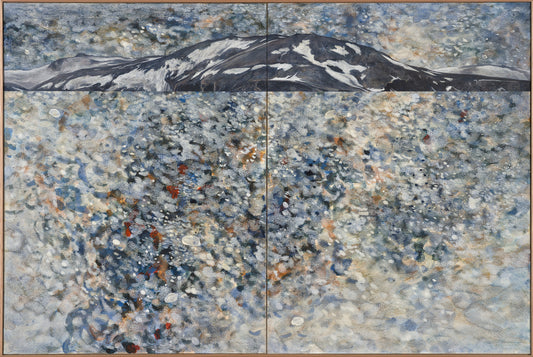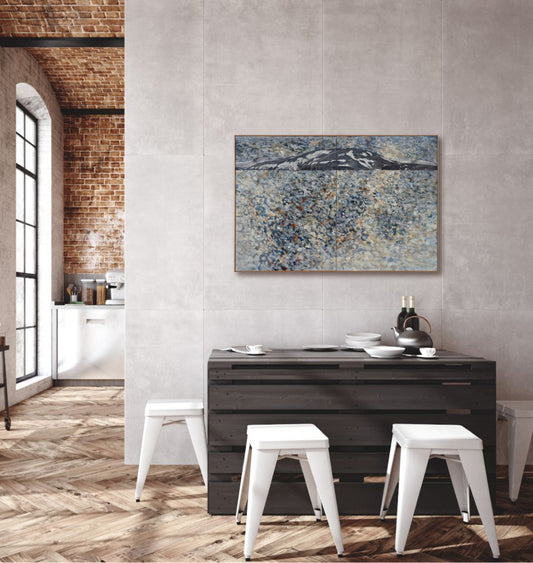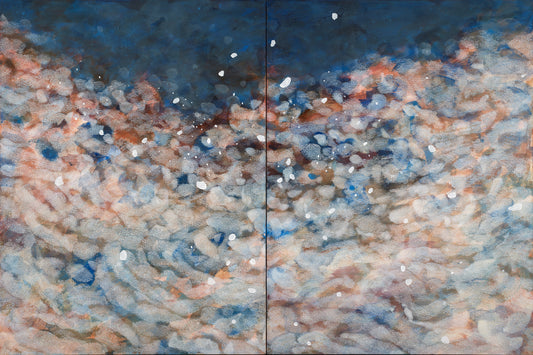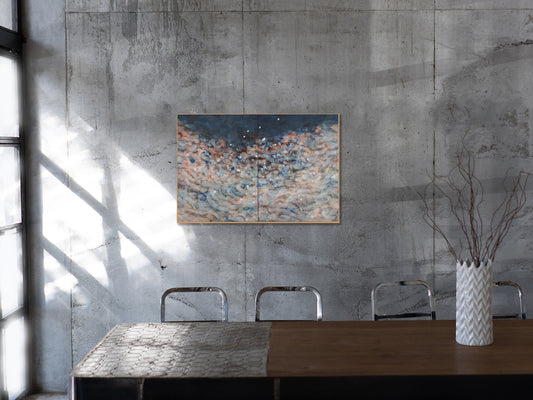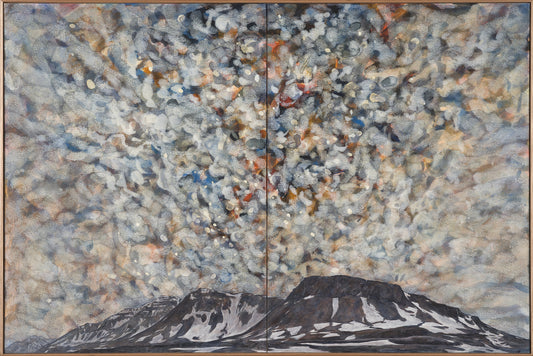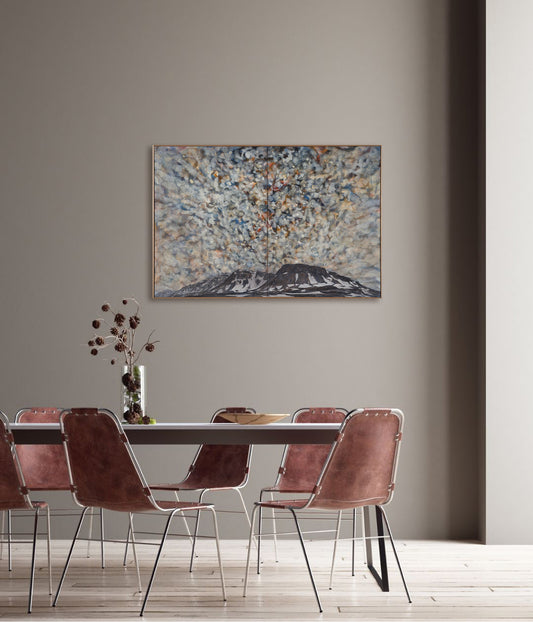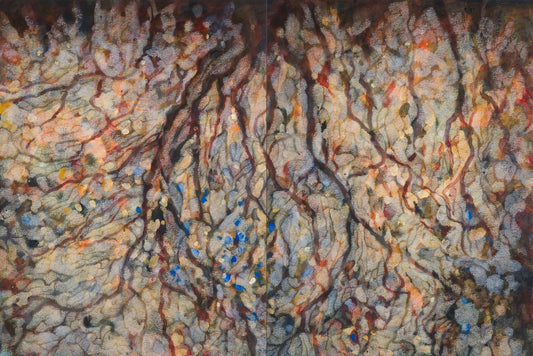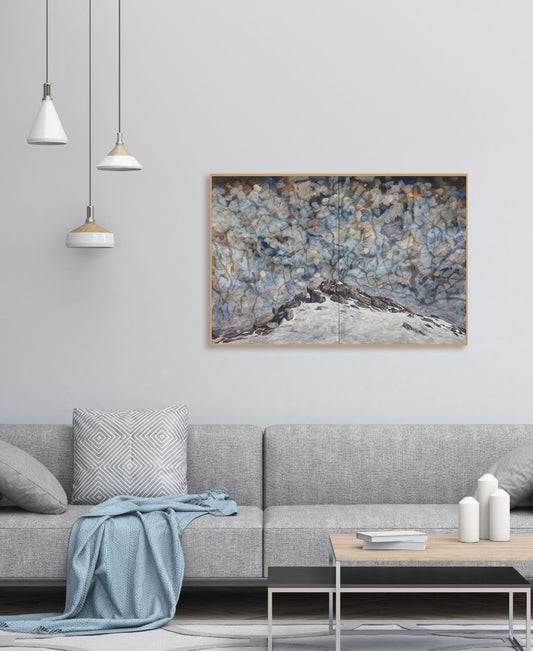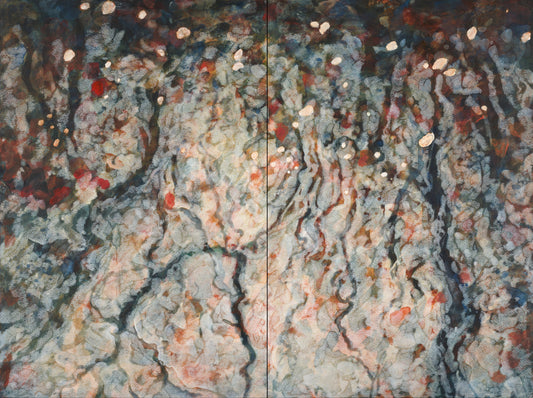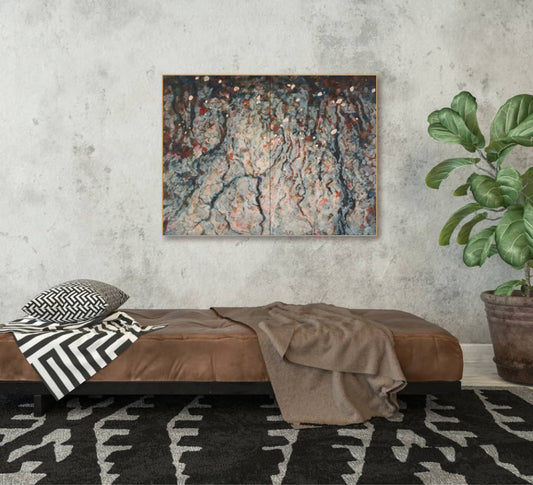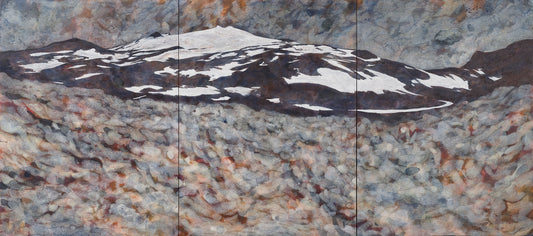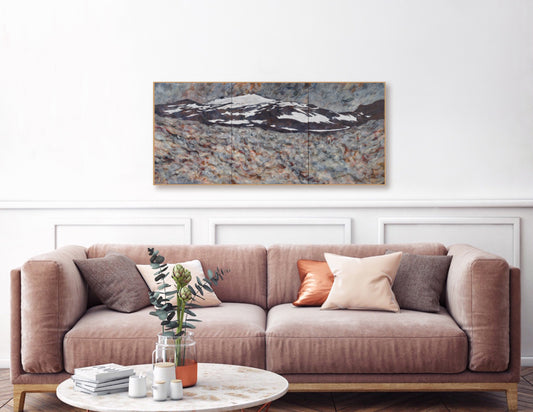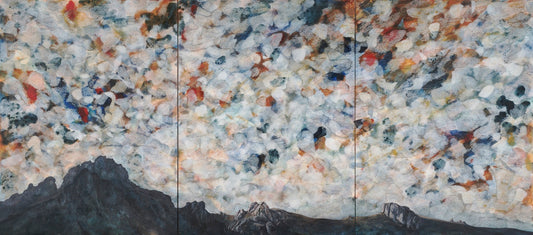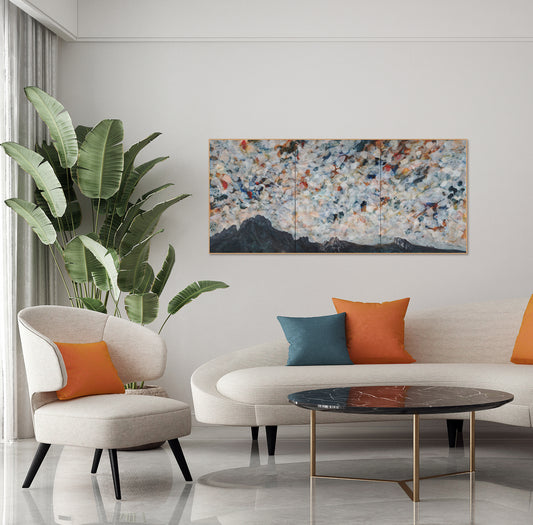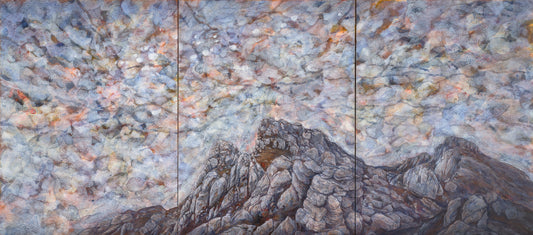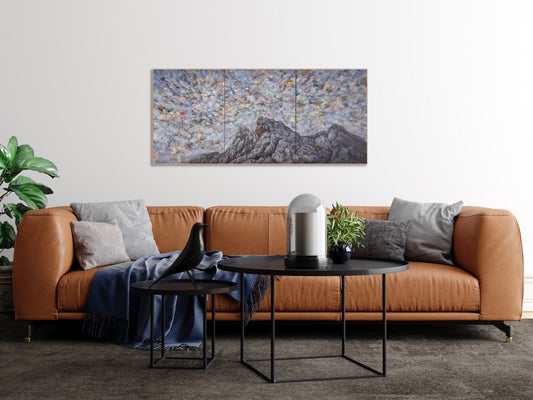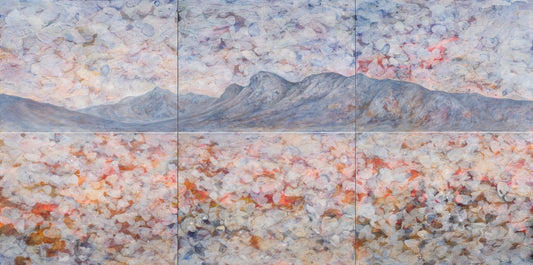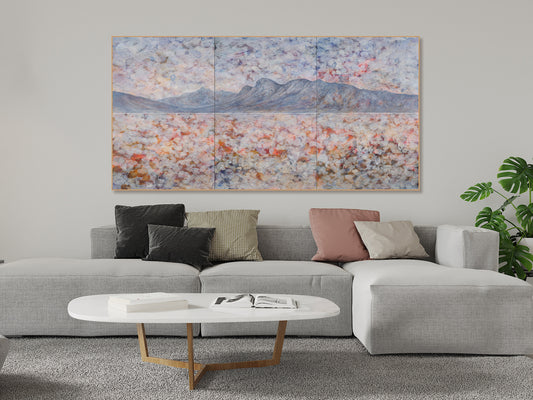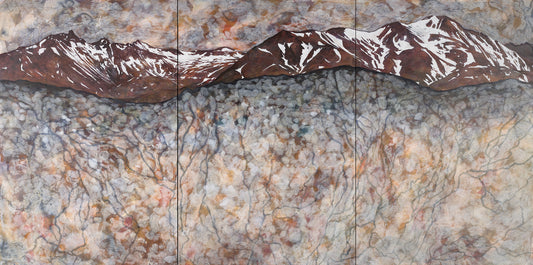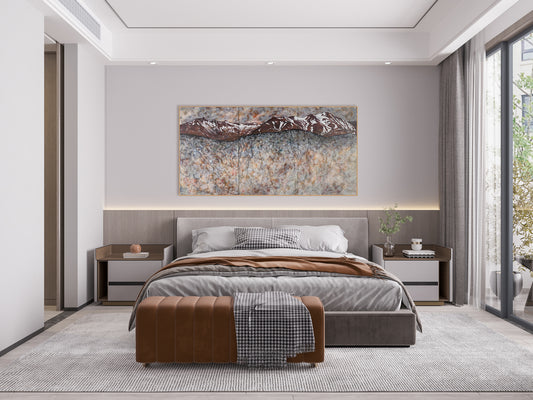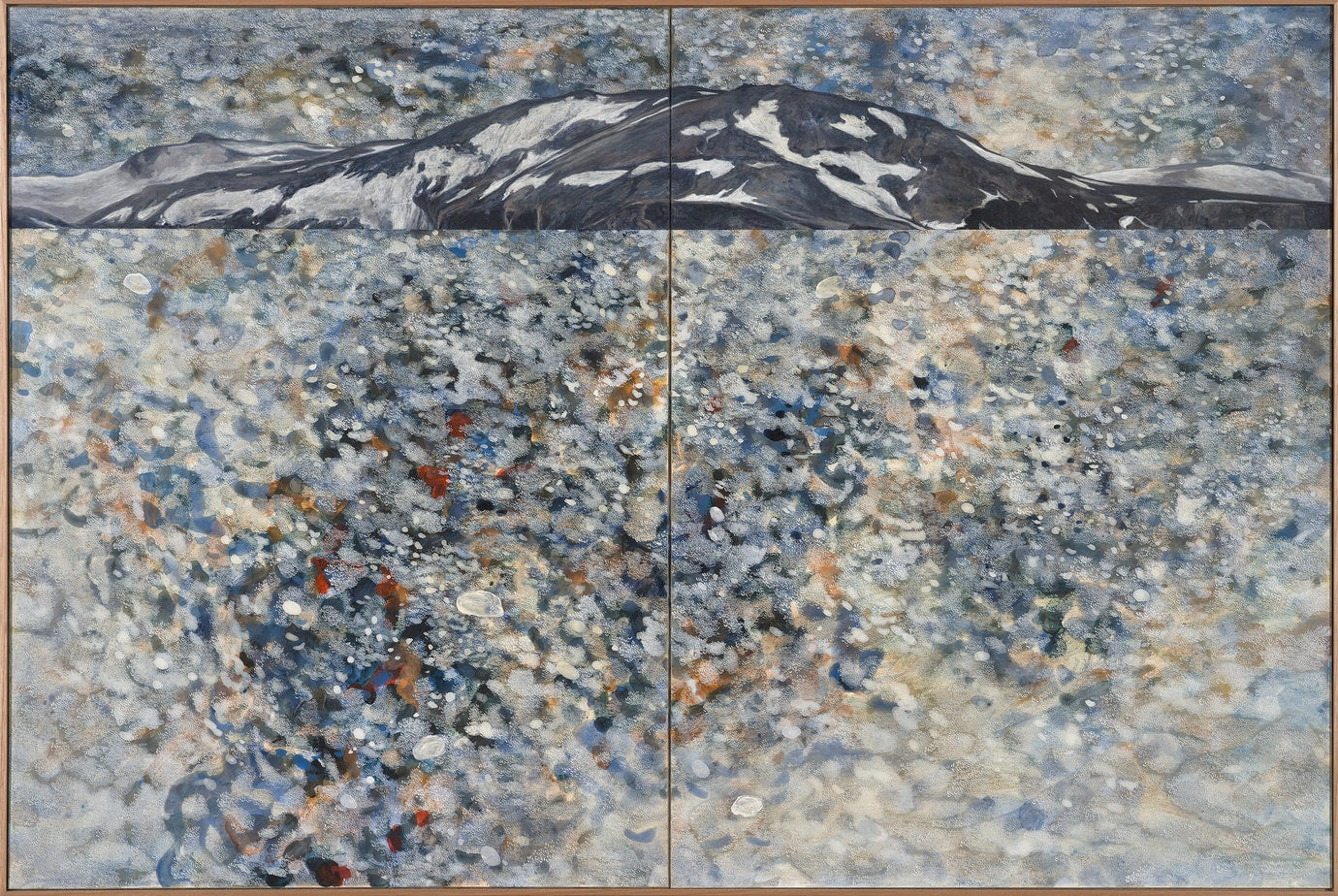
Sue Lovegrove | Water Sky: Intimate and Distant Landscapes
Exhibition
Showing: MARCH 7 - APRIL 13
There is an inherent abstraction in the mesmerising patterns of light and shadow that play out both on the surface of water and in the vast theatre of the sky. In this series of paintings ‘Water Sky’ I’m interested in the abstract and indeterminate qualities of the elemental forces of water and air in the landscape. Both are in a constant state of flux and transience. They keep drawing me back in, conjuring a state of reverie and contemplation, of inner stillness amongst all that is moving and changing. For me they are metaphors of the impermanence of existence as well as the obscure and restless depths of our minds.
About
Sue Lovegrove | Water Sky: Intimate and Distant Landscapes
There is an inherent abstraction in the mesmerising patterns of light and shadow that play out both on the surface of water and in the vast theatre of the sky. In this series of paintings ‘Water Sky’ I’m interested in the abstract and indeterminate qualities of the elemental forces of water and air in the landscape. Both are in a constant state of flux and transience. They keep drawing me back in, conjuring a state of reverie and contemplation, of inner stillness amongst all that is moving and changing. For me they are metaphors of the impermanence of existence as well as the obscure and restless depths of our minds.
I think of the surface of water as a threshold space, a place of liminality between the known and unknown, between the two forces of air and water meeting and becoming one. I’m interested in what we see and experience at the periphery of our perception – constantly shifting light patterns, the melancholy darkness of shadows at the edge, the sounds of life and the movement of wind and weather imprinting on the surface of water and our bodies.
For many years I thought of myself as an abstract painter, however more recently I have shifted to bring in more figurative elements of the landscape – the shape of a mountain summit or a distant peak in order to separate the space between what is real and solid and that which is indeterminate, ambiguous and imagined. This creates an iconomorphism between the abstract and the figurative elements incorporating multiple viewpoints and scales within the one image. The linear tracery of ripples and shadows on the surface echoes a planar view of river systems in the landscape. At times the viewer is looking down into the depths of water and other times across a mountain to a river of water in the sky.
The topography that features in the series are from South West Tasmania and Iceland, both are places where I have done extensive bushwalking. Their terrain is connected as the mountains of Tasmania were once glaciers thousands of years ago, as the landscape is in Iceland today. But the glaciers of Iceland are slowly vanishing. Within the next century many of Iceland’s glaciers will have disappeared forever.
The paintings are created with many layers of transparent and opaque washes built up to create an illusion of vast depth and pictorial space. Over this is layered a veil of tiny white brush marks which over the years have become a kind of signature mark making in my paintings. They echo an underlying desire for a minimalist abstraction based on the homeostatic rhythms of the body – the pulse of the heartbeat, the steady rhythm of breathing or the quiet repetition of footfall while walking through the landscape. The repetitive act of painting these tiny brush marks, generates a stillness contained within the movement of the image. The accumulation of the lines creates a sequential field of marks reminiscent of the minute ripples of light and shadow on the surface of water that is both miniscule and expansive at the same time. They are the pulse of the landscape in a flow of continuity – shuddering and vibrating with life, sound and energy, which in turn is perceived and experienced within and throughout the body. Sometimes I think of my paintings as a sound score to the pulse of the landscape.
These paintings are about a state of mind as much as they are meditations on the impermanence of existence. They are a way of being in and within a landscape, of sitting still for long enough to perceive a place and have it resonate within one’s own body, or watching a glacier melt imperceptibly, as well as celebrations of the enigmatic abstract worlds of stillness and movement found in water and the sky.
“If you would experience a landscape, you must go alone into it and sit down somewhere quietly and wait for it to come in its own good time”
Paul Gruchow, The Necessity of Empty Places, 1988


